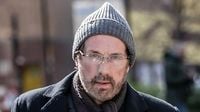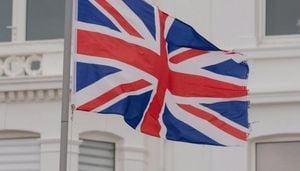On August 20, 2025, a verdict was handed down in one of the most disturbing cases to rock the Church of England in recent memory. Christopher Brain, a former priest and once-celebrated leader of the Nine O'Clock Service (NOS), was found guilty of 17 counts of indecent assault against nine women. The trial, held at Inner London Crown Court, brought to light a labyrinthine story of innovation, charisma, control, and abuse that spanned more than a decade, leaving both victims and the wider church community grappling with the consequences.
Chris Brain, now 68, led the NOS in Sheffield during the 1980s and 1990s. The group, which quickly gained notoriety for its rave-inspired, multimedia services aimed at young adults, attracted between 500 and 600 worshippers each Sunday night. According to Sky News, the services were a far cry from traditional Anglican liturgy, featuring live bands, scantily dressed women, and a club-like atmosphere. The movement was initially hailed by church leaders as “ground-breaking,” with even the Archbishop of Canterbury offering praise for Brain’s innovative approach to worship.
But behind the pulsing lights and energetic music, prosecutors described a much darker reality. As reported by The Independent, the NOS became a "closed and controlled group," where Brain dominated and abused his position. Prosecutor Tim Clark KC told the jury that Brain "abused his position first as a leader and then as an ordained priest to sexually assault a staggering number of women." The court heard that members were vetted, organized into "discipleship" groups, and systematically isolated from friends and family. Many became utterly dependent on NOS and, by extension, on Brain himself.
Women in the group, sometimes referred to as “the Lycra lovelies” or “the Lycra nuns,” were organized into a “homebase team” responsible for keeping Brain’s house “spotlessly clean” and attending to his every need. Some gave him what were described as “sensual” massages, which Brain told the jury were intended to relieve his tension headaches. He admitted to receiving back massages from members, saying, “With some of my closest friends, it would be kissing sometimes, occasionally massaging, stroking. Anything more than that, we would back off.” He insisted that any sexual activity was consensual, adding, “I would’ve instantly stopped if anyone had indicated they were uncomfortable.”
Yet, the testimonies of the women painted a very different picture. One woman, who joined the church as a teenager, said she viewed Brain as a “form of prophet” who told her their contact was part of her “sexual healing.” She described feeling unable to leave, stating that she submitted to sexual activity “in order to survive.” Another described Brain as “almost a God,” and recounted being invited to his home, where she was pinned down and raped while repeatedly saying no. According to the prosecution, women who did not keep Brain happy would find themselves ostracized from the group, further deepening their dependence on him and the NOS community.
Brain’s ordination itself was shrouded in controversy. The court heard that his path to Holy Orders was “fast-tracked,” with allegations that he cheated on his exams. For the ceremony in 1991, he wore a cassock identical to the one worn by Robert De Niro in the film The Mission—a detail that, in hindsight, seems to underscore both his theatrical flair and his penchant for blurring boundaries. As the NOS grew in popularity, Brain became a media darling, celebrated for his radical approach. He described himself to the jury as “the most radical ordained vicar there was,” adding, “I wasn’t a traditional vicar, I was someone on a journey of radical research and experimentation.” He claimed the NOS was a “free, open, really caring, very fun environment,” and noted that some members had even become interested in tantric celibacy around 1990 as the movement developed its own theology.
However, by 1994, allegations of sexual abuse began to surface, and the NOS quickly collapsed under the weight of scandal. Brain resigned from Holy Orders in 1995 amid what the court described as “enormous media interest.” In a 1995 BBC documentary, Brain admitted to “improper sexual conduct with a number of women” in the church, but denied that this amounted to abuse. After his resignation, Brain attempted to reinvent himself, becoming involved in the dotcom boom and later running a business that helped smaller firms transition into larger companies. That enterprise, too, folded once he was charged.
During the trial, Brain denied committing sexual offences against 13 women, including one count of rape and 36 counts of indecent assault dating from 1981 to 1995. On August 20, 2025, the jury found him guilty of 17 counts of indecent assault relating to nine women but acquitted him of 15 similar charges. The jury was still deliberating on five outstanding counts, including the rape charge, as of the verdict date. Brain, for his part, maintained his innocence on the most serious allegations, telling the court that the accusations had “basically destroyed my life.” He suggested the women had “to exaggerate these things to make it either sexual or controlling” in order “to make a criminal case.”
The collapse of the NOS and Brain’s subsequent conviction have left a lasting mark on the Church of England and the broader faith community. What began as a bold experiment in youth outreach devolved into a cautionary tale about unchecked charisma, the dangers of insular communities, and the devastating impact of abuse of power. The case has sparked renewed debate about the responsibility of religious institutions to protect vulnerable members and the importance of robust oversight—lessons painfully learned, but ones that cannot be ignored moving forward.
As the jury continues its deliberations on the remaining charges, including the allegation of rape, the women who came forward—and the hundreds who once filled the pews at NOS—are left to reckon with the legacy of a movement that promised spiritual liberation but, for many, delivered only pain and betrayal.




